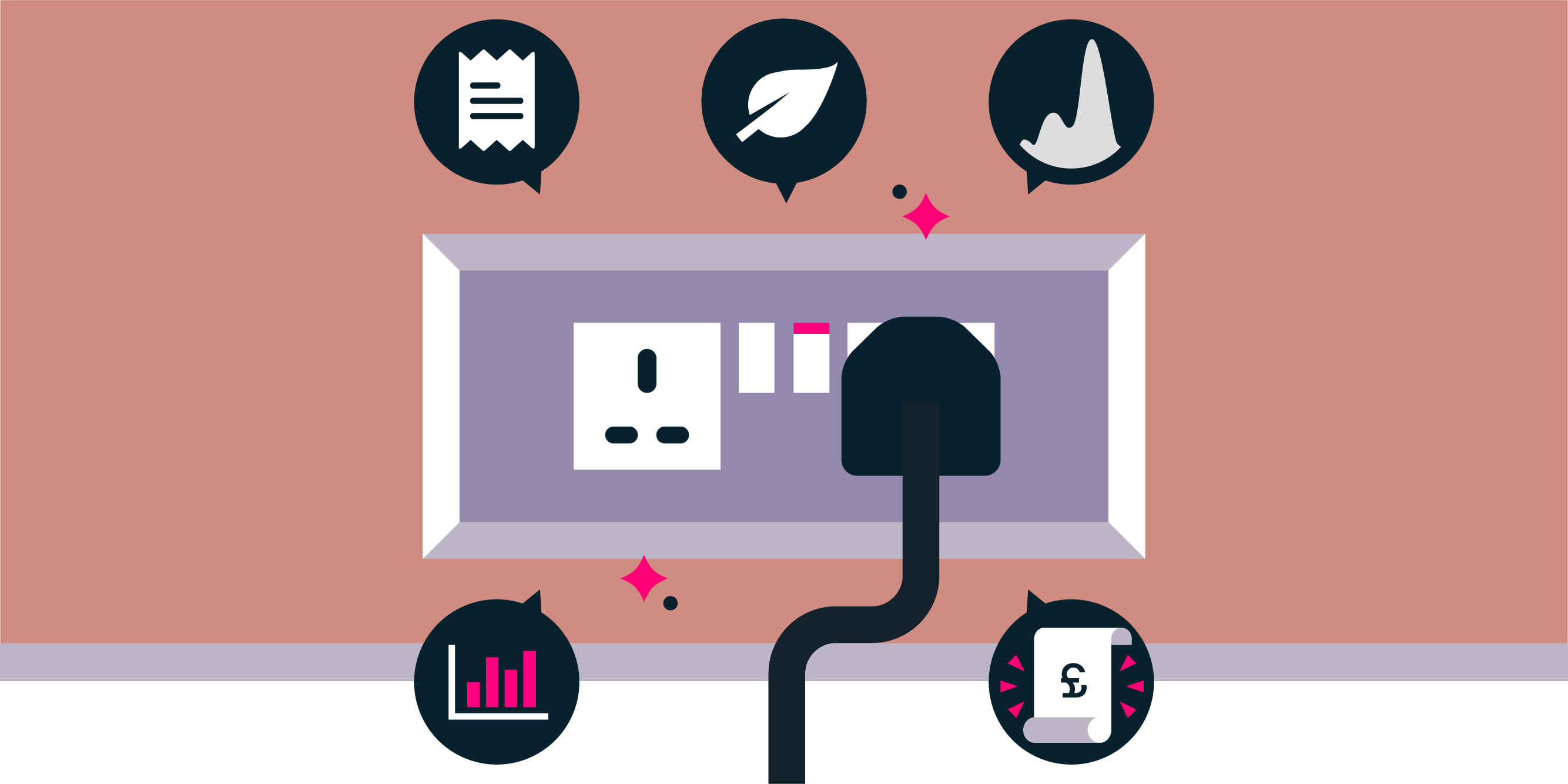From fixed to export, our guide to energy tariffs
As we outlined in a previous blog post, only 15% of people actually switch each year. Why? Well, it may be partly due to some confusion around all the different types of tariff available, so here's our guide to what they all mean, to help you decide which one is best for you.
Fixed or capped energy tariffs
With this type of tariff, the unit cost of your electricity or gas is fixed for a certain time period – usually a year, but it can be more. So, you’re protected from price increases. But on the flipside, you won’t benefit if energy prices are cut.
Standard or variable tariffs
This is your supplier’s default option. These tariffs are variable, rather than fixed, meaning the price of your energy will rise or fall with the market.
It’s usually an expensive option; the difference between the average standard variable tariff price and the cheapest market tariff can be over £300.
Despite the expense, more than half (54%) of people linger on their supplier’s default tariff for more than three years. This might be because their fixed price energy tariff has ended, or because they’ve moved home and automatically gone onto the current supplier’s default tariff.
You may not even know if you’re on this type of tariff. Take a look at the tariff details on your energy bill or contact your supplier to check.
Dual fuel tariffs
This type of tariff is designed for convenience. You get gas and electricity from the same energy supplier. As well as only receiving one bill - and the ease of only having to deal with one company - some suppliers offer a discount if you buy both your fuels from them.

Online energy tariffs
Do you really need to receive paper bills in the post from your energy supplier? It’s better for the environment, and more convenient for many people, to manage their household energy online, including sending meter readings and receiving bills. It’s easier for energy companies too, so online tariffs often offer discounts.
Prepayment Tariffs
Around 4 million energy customers in Britain, or 16% of the total, are on expensive prepayment meters. Customers on prepayment meters pay in advance for gas and electricity using prepay tokens, cards or a key.
'Green' energy tariffs
An increasing number of green suppliers offer tariffs providing renewable electricity.
Some companies only buy renewable electricity, and so all their customers are on a green tariff.
It’s important to do your research carefully though, as not all green tariffs are 100% renewable; some suppliers only offer between 15 to 33% of energy from renewable sources, according to research from Compare the Market.
Time of use tariffs
Some people wrongly assume that how much they pay for their energy varies according to time of day. This isn’t normally the case unless you’re on a special ‘time of use’ tariff. These offer cheaper energy during specified off-peak, low demand times of day. On the flipside, using energy at peak times on these tariffs can be quite expensive. The two most common time of use tariffs are:
- Economy 7 tariffs, which provide cheaper electricity for seven hours each day, usually between midnight and 7am
- Economy 10, which offer ten hours of ‘off-peak’ energy. These hours are spread throughout the day, depending on the supplier.
If you’re considering a switch to a time of use tariff, then you need to consider when your household uses energy. If you’re an electric car owner, for example, and charge your vehicle overnight, then this type of tariff might be right for you.

Export tariffs
This is a new type of tariff to tie in with the introduction of the Smart Export Guarantee (SEG). Under this scheme, which replaces the existing 'Feed-in Tariff' scheme (FIT), homeowners with solar panels installed from 2020 will be able to sell excess energy back to the grid through their energy supplier.
To make this happen, suppliers will establish export tariffs. In fact, Octopus Energy already offers this type of tariff.
We’ll be writing more about the new SEG on Loop, so subscribe to our newsletter to stay abreast of the latest.
Agile Tariffs
This new type of tariff enables you to shift your electricity use to when it’s cheapest and can even pay you to use electricity. One early supplier to offer these tariffs, Octopus Energy, says in the last 12 months its Agile tariff could have saved a typical UK family £210 compared to the average variable tariff from the bigger energy suppliers. The same family could save another £120 by shifting their electricity use outside of peak hours, Octopus says.
Loop can help you to understand your patterns of consumption and highlight whether you could benefit from an Agile tariff.
So, time to get switching.
How to switch
There are a number of ways to switch, some easier than others.
- Call your current supplier and ask to switch to their cheapest tariff. Aside from the time you'll spend on the phone, this has the advantage of being pretty easy. However you'll only get the best rate your current supplier is offering, which may still be a lot more expensive than the best on the market.
- There are a number of switching websites whose adverts you'll probably have seen. These are take a little longer as you need to add all of your personal, household and energy consumption details. They also won't necessarily show you the whole of the market.
- The easiest way (we think!) is to use Loop. Loop will assess your current tariff and energy usage, then give you a tariff healthcheck. If you can save money by switching, we'll tell you how much. We'll show you all the available tariffs, including better value options with your own supplier. We'll also show you supplier ratings based on a number of sources including Citizens Advice and OFGEM, then make it super-simple to actually switch via the app. Then you can forget about it - we'll tell you when it's time to check again.
Given average savings from switching energy supplier are over £250 per annum, your Loop will pay for itself in no time. Find out more here.
• • •
With Loop, you can find out how you use electricity, then make smart decisions about using less - click here to find out more. We have a risk-free, no-quibble, money-back guarantee as standard, so what's to lose...apart from some £££ from your bills and some weight from your carbon footprint?







